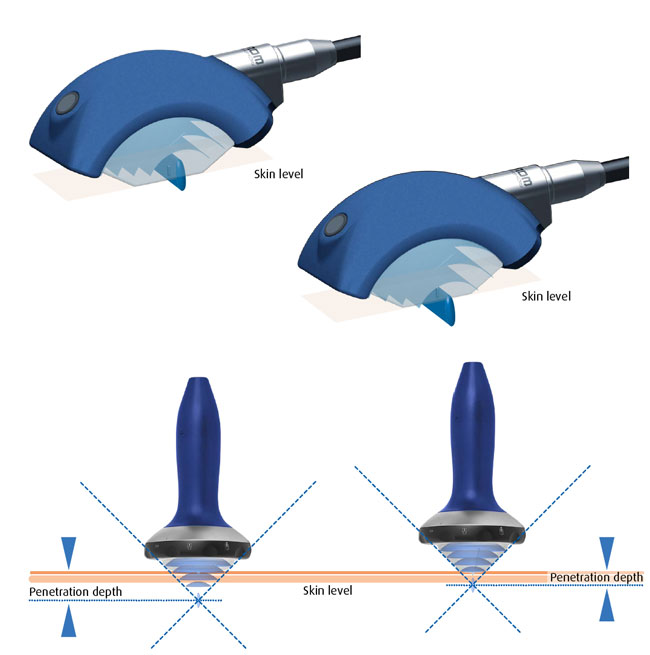In the world of orthopedic and sports medicine, where injuries are all too common, finding effective treatments that don’t involve injections, steroids, or surgery can be a game-changer.
Enter shockwave therapy, a groundbreaking solution harnessing the body’s natural healing properties to promote tissue repair. The goal of this article is to introduce shockwave therapy, exploring its benefits, applications, and why it has become a preferred choice for patients seeking optimal recovery.
What is Shockwave Therapy?
Shockwave therapy is a remarkable low-energy compression treatment that utilizes sonic acoustic waves to facilitate tissue healing. By targeting tissues at varying depths, this therapy induces deep-tissue stimulation, creating an environment conducive to natural healing.
Shockwave therapy is a non-invasive and cutting-edge treatment that utilizes sound waves to increase blood flow to injured or inflamed areas. With its proven safety and effectiveness, this therapy repairs damaged tissue, enhances mobility, and reduces pain.
Focused vs. Radial Shockwave Treatment: Unveiling the Difference
Shockwave therapy comes in two primary forms: radial and focused shockwave treatment. When considering shockwave therapy, it is essential to distinguish between these two variations and understand their respective advantages.
Radial shockwave therapy offers less penetration depth and broad treatment coverage for superficial but large areas.
On the other hand, focused shockwave therapy provides deeper penetration and through direct focusing allows for more precise targeting of localized areas. Regarded as the premium version, focused shockwave therapy with its precise focus and finely adjustable penetration depth, presents an ideal solution for patients seeking highly targeted treatment.
Conditions Treated with Shockwave Therapy
Shockwave therapy has emerged as an effective treatment for a wide range of orthopedic and sports-related injuries. It has demonstrated positive outcomes in treating tendon, ligament, muscle, and joint ailments.
Conditions such as rotator cuff tendinitis, golfer’s and tennis elbow, calcific tendinitis, achilles tendonitis, and plantar fasciitis respond well to shockwave therapy.
Additionally, this therapy can alleviate neck pain, low back pain, and certain types of hip injuries, further expanding its versatility in managing musculoskeletal discomfort.
How Does Shockwave Therapy Work?

Sonic acoustic waves are the cornerstone of shockwave therapy. This conservative treatment is pivotal in enhancing collagen synthesis, breaking up soft tissue calcifications, releasing growth factors, and stimulating the body’s innate healing process.
Furthermore, shockwave therapy results in increased blood flow, improves blood circulation and promotes angiogenesis, which involves the formation of new blood flow pathways. By capitalizing on these mechanisms, shockwave therapy stimulates the body’s natural healing process, allowing patients to avoid steroid injections or even surgical interventions.
What to Expect During Shockwave Therapy Treatment
Shockwave therapy treatment is safe, non-invasive, and relatively simple. The process begins with an assessment by a skilled therapist, who will locate and identify the area requiring treatment. A gel is then applied to the treatment area, facilitating the transmission of sound waves to the affected skin region. Finally, a handheld probe is placed on the injured area to administer the sound waves.
Typically, the treatment lasts between five to ten minutes. While the therapy device may emit some noise and the treatment might cause slight discomfort, the duration is short enough for most individuals to tolerate minimal pain.
Should you experience severe discomfort, communicate this to your therapist, who can adjust or lower the intensity of the treatment accordingly.
Number of Treatments Required
The number of shockwave therapy sessions needed varies depending on the type and severity of the injury and individual tissue response.
It’s important to note that the effects of shockwave therapy are cumulative, necessitating multiple treatments for optimal results.
Typically, patients experience the most significant benefits after three to five sessions of shockwave therapy. During your treatment plan, your therapist will closely monitor your progress and tailor the number of sessions accordingly to ensure the best possible outcome.
Comparing Shockwave Therapy with TENS and Ultrasound
Although shockwave therapy shares similarities with ultrasound, it boasts some crucial distinctions. While ultrasound also employs sonic waves and uses piezo crystals similar to shockwave, its primary modality is thermal (heat) therapy. It produces low intensity, high frequency waves. This does not allow deep penetration and therefore has limited ability to heal tissues.
Another popular option for musculoskeletal pain relief is TENS, which involves the delivery of low-voltage electrical impulses through “sticky pads” to the affected area. These impulses stimulate nerves, providing short-term pain relief but does not promote healing of the tissue like shockwave. Compared to these alternatives, shockwave therapy, with its low energy shockwaves, stands out as a highly effective and safe treatment option.
Safety and Candidacy for Shockwave Therapy
Shockwave therapy is an exceptionally safe treatment option. Unlike surgery or steroid injections, it requires little to no downtime, allowing most patients to resume their daily activities immediately after a session. Minor side effects, such as bruising and soreness in the treated area, are transient. Shockwave therapy can be combined with traditional treatments to accelerate recovery and enhance healing significantly. As such, it proves particularly beneficial for athletes and individuals with physically demanding jobs who wish to return to full activity promptly. However, it is important to note that shockwave therapy may not be suitable for everyone. Individuals with metabolic bone disorders, pacemakers, or those taking medications that affect blood clotting should consult their healthcare provider before pursuing shockwave therapy.
A Great Alternative to Steroid Treatment for Children

Another significant benefit of Shockwave treatment is that it’s safe for all ages, including children. And it’s a highly effective alternative to steroids such as prednisone. This is especially important when treating children, as steroid treatment is less safe for children. This makes Shockwave treatment a great option for treating children with sports injuries and other conditions that would typically require steroids as part of the treatment plan.
Schedule Your Shockwave Therapy Session Today
If you are grappling with pain that hinders your everyday life, shockwave therapy offers a compelling and effective solution to reduce pain and for rapid recovery. As sports medicine specialists and a leading provider of non-surgical orthopedics in Phoenix, we are proud to provide shockwave treatment due to the exceptional results it has yielded for patients. Our specialists possess the expertise to assess your condition and recommend a comprehensive treatment plan tailored to your needs. Call us today to schedule an appointment to take the first step toward optimal healing.



